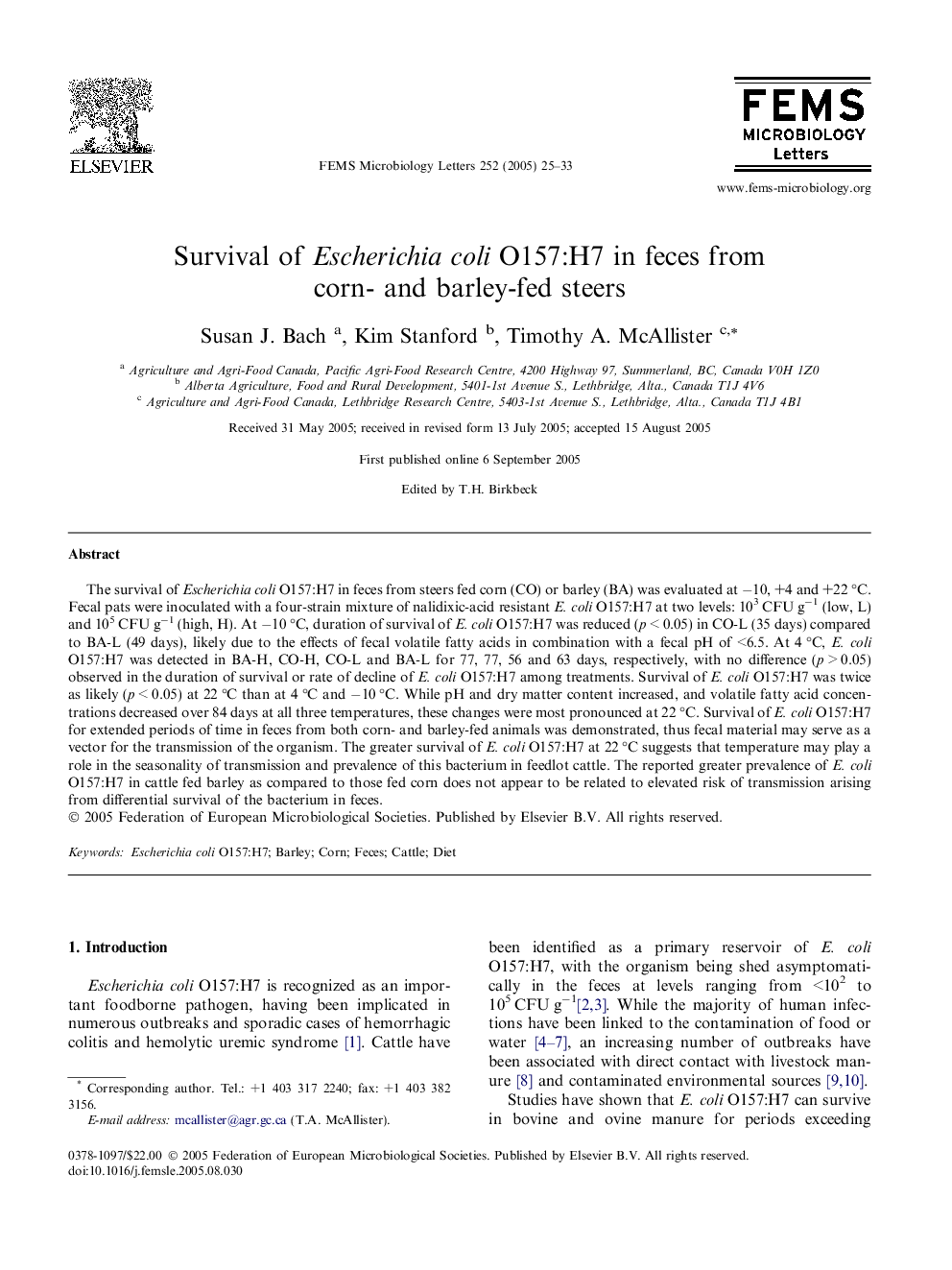| Article ID | Journal | Published Year | Pages | File Type |
|---|---|---|---|---|
| 9121310 | FEMS Microbiology Letters | 2005 | 9 Pages |
Abstract
The survival of Escherichia coli O157:H7 in feces from steers fed corn (CO) or barley (BA) was evaluated at â10, +4 and +22 °C. Fecal pats were inoculated with a four-strain mixture of nalidixic-acid resistant E. coli O157:H7 at two levels: 103 CFU gâ1 (low, L) and 105 CFU gâ1 (high, H). At â10 °C, duration of survival of E. coli O157:H7 was reduced (p < 0.05) in CO-L (35 days) compared to BA-L (49 days), likely due to the effects of fecal volatile fatty acids in combination with a fecal pH of <6.5. At 4 °C, E. coli O157:H7 was detected in BA-H, CO-H, CO-L and BA-L for 77, 77, 56 and 63 days, respectively, with no difference (p > 0.05) observed in the duration of survival or rate of decline of E. coli O157:H7 among treatments. Survival of E. coli O157:H7 was twice as likely (p < 0.05) at 22 °C than at 4 °C and â10 °C. While pH and dry matter content increased, and volatile fatty acid concentrations decreased over 84 days at all three temperatures, these changes were most pronounced at 22 °C. Survival of E. coli O157:H7 for extended periods of time in feces from both corn- and barley-fed animals was demonstrated, thus fecal material may serve as a vector for the transmission of the organism. The greater survival of E. coli O157:H7 at 22 °C suggests that temperature may play a role in the seasonality of transmission and prevalence of this bacterium in feedlot cattle. The reported greater prevalence of E. coli O157:H7 in cattle fed barley as compared to those fed corn does not appear to be related to elevated risk of transmission arising from differential survival of the bacterium in feces.
Related Topics
Life Sciences
Biochemistry, Genetics and Molecular Biology
Genetics
Authors
Susan J. Bach, Kim Stanford, Timothy A. McAllister,
